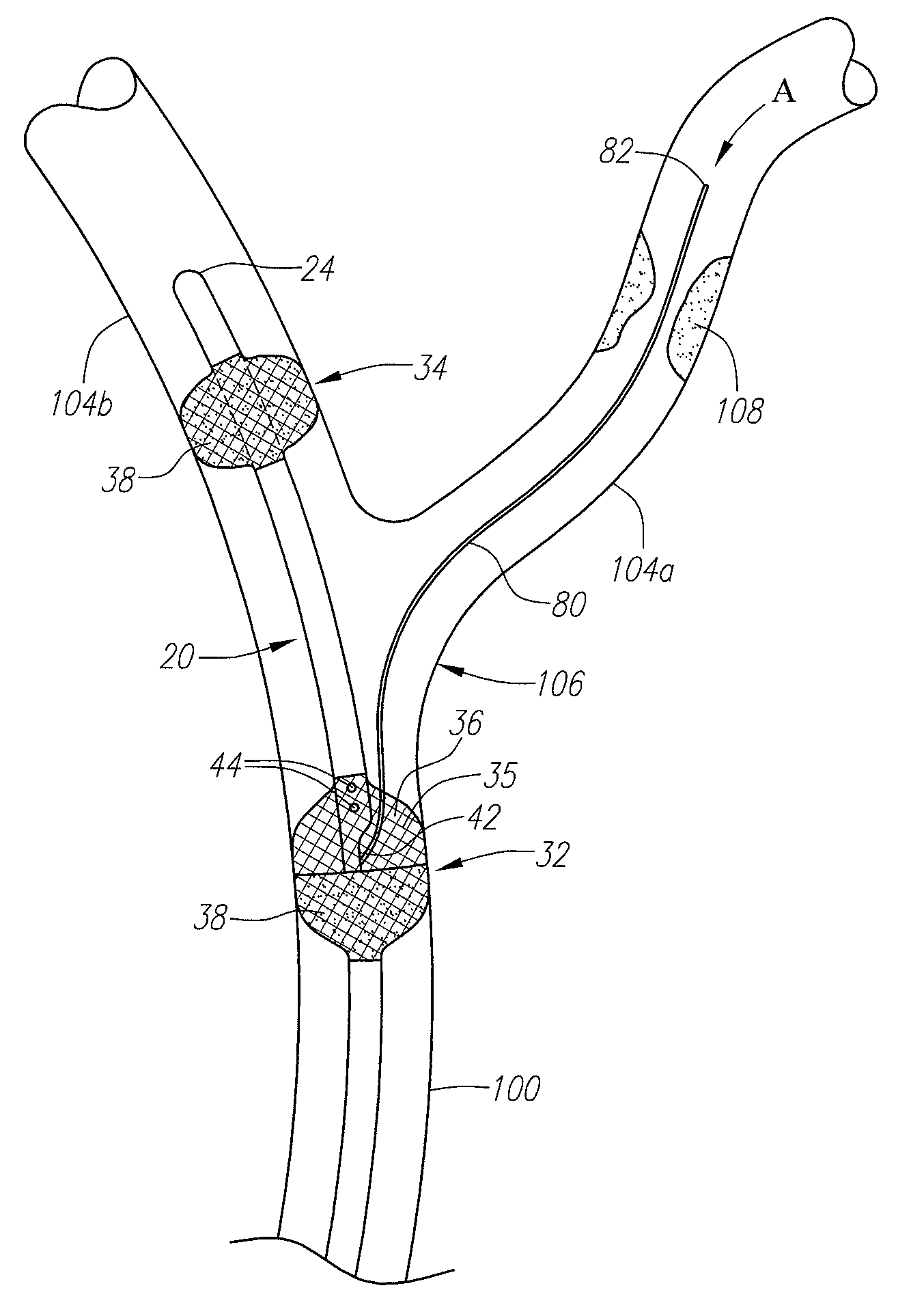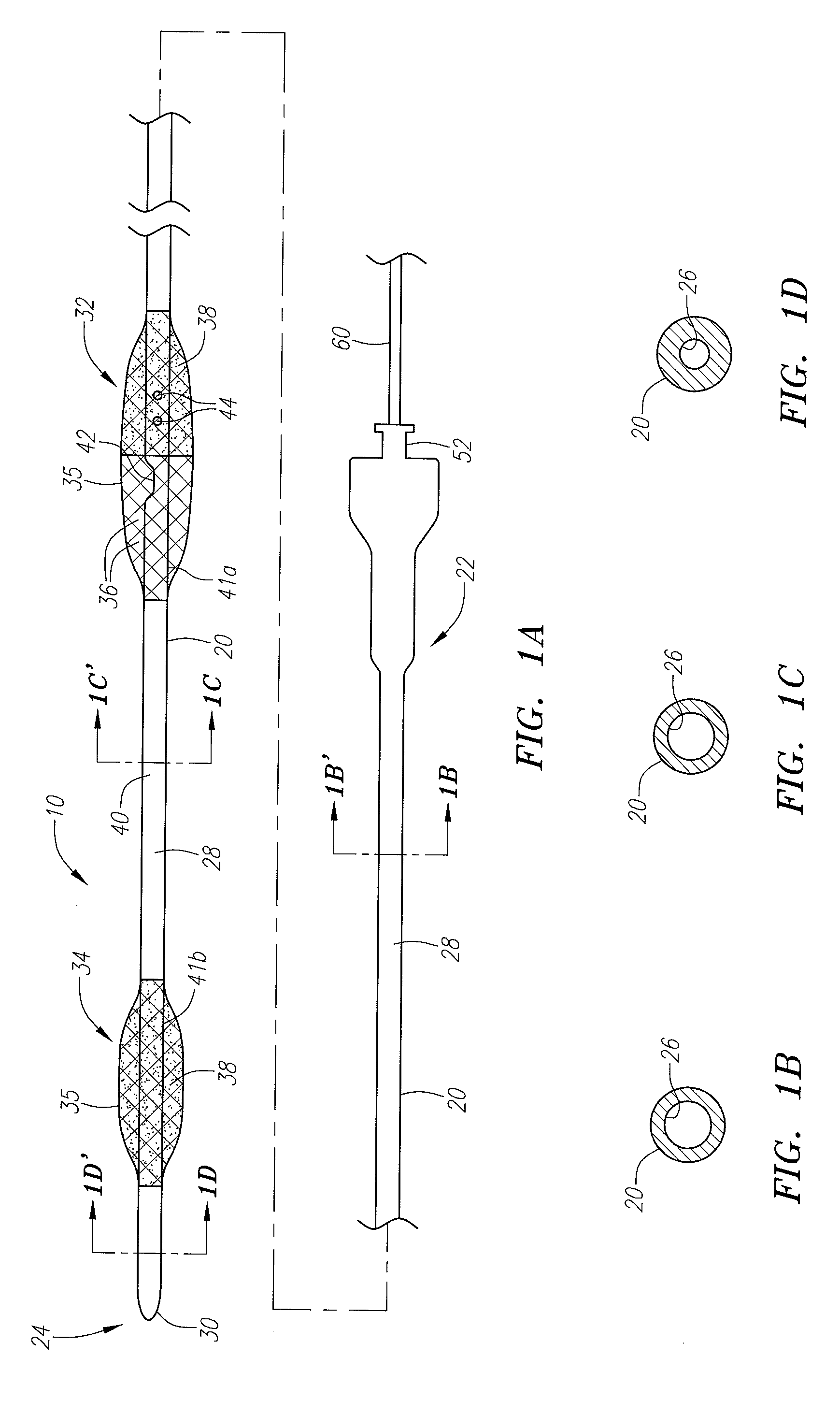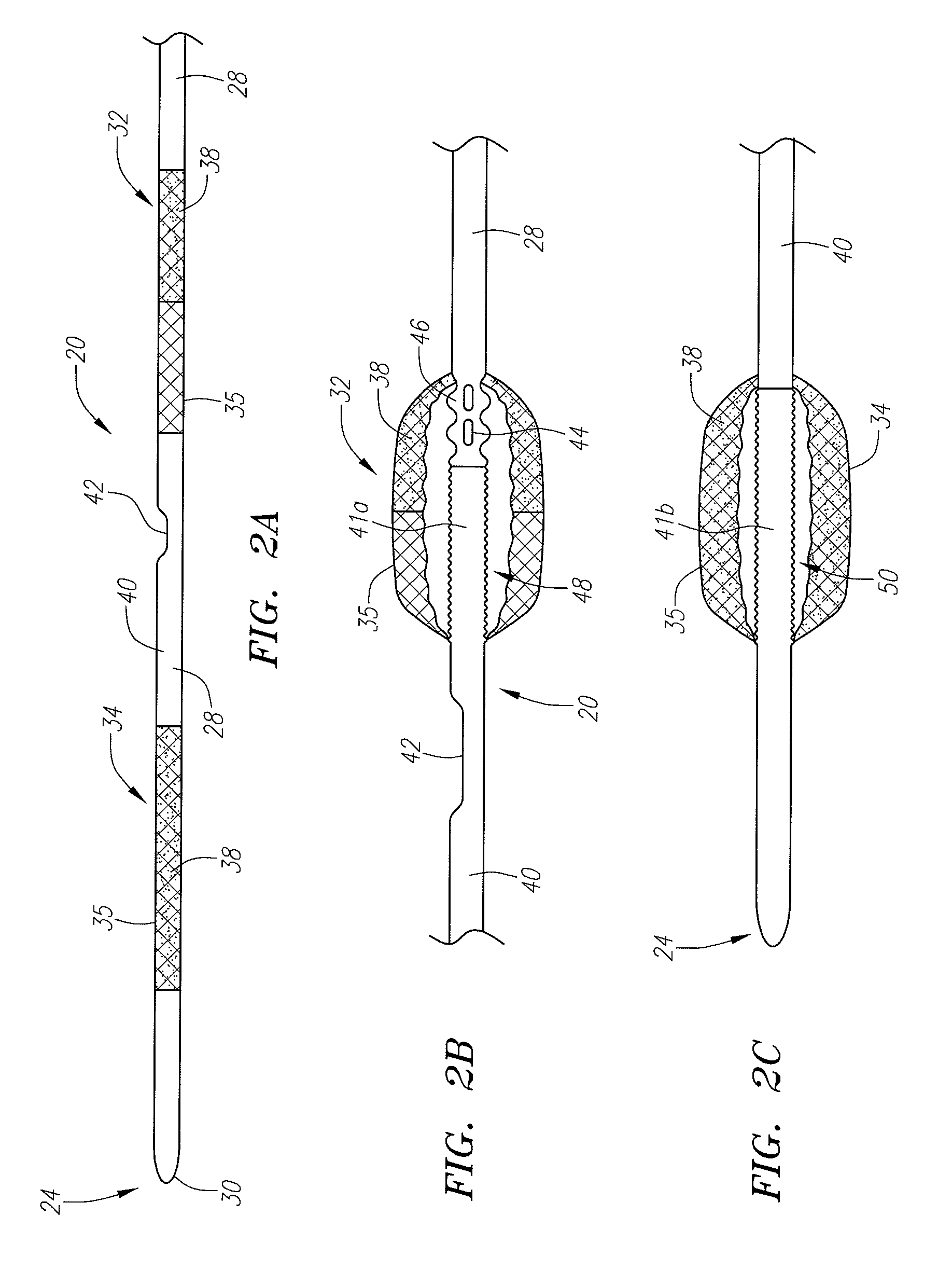Occlusion device and method of use
a technology of occlusion device and occlusion chamber, which is applied in the direction of stents, dilators, surgery, etc., can solve the problems of cell death, brain tissue ischemia, and plaque or other material parts loosening and being released, and a major risk for patients
- Summary
- Abstract
- Description
- Claims
- Application Information
AI Technical Summary
Benefits of technology
Problems solved by technology
Method used
Image
Examples
Embodiment Construction
[0067]As used herein, the terms proximal and distal refer to a direction or a position along a longitudinal axis of a catheter or medical instrument. Proximal refers to the end of the catheter or medical instrument closest to the operator, while distal refers to the end of the catheter or medical instrument closest to the patient. For example, a first point is proximal to a second point if it is closer to the operator end of the catheter or medical instrument than the second point.
[0068]FIGS. 1A-1D, 2A-2C, 3A, 3B, and 4 illustrate various aspects of a system 10 for the protection of cerebral vessels or brain tissue. The system 10 includes a catheter 20 (illustrated in FIGS. 1A-1D), an elongate stretching member 60 (illustrated in FIGS. 1A, 3A and 3B), and a guidewire 80 (illustrated in FIG. 4). The system 10 can also include one or more additional components used during the interventional procedure. These include, for instance, an introducer or the like (not shown) that is used duri...
PUM
 Login to View More
Login to View More Abstract
Description
Claims
Application Information
 Login to View More
Login to View More - R&D
- Intellectual Property
- Life Sciences
- Materials
- Tech Scout
- Unparalleled Data Quality
- Higher Quality Content
- 60% Fewer Hallucinations
Browse by: Latest US Patents, China's latest patents, Technical Efficacy Thesaurus, Application Domain, Technology Topic, Popular Technical Reports.
© 2025 PatSnap. All rights reserved.Legal|Privacy policy|Modern Slavery Act Transparency Statement|Sitemap|About US| Contact US: help@patsnap.com



